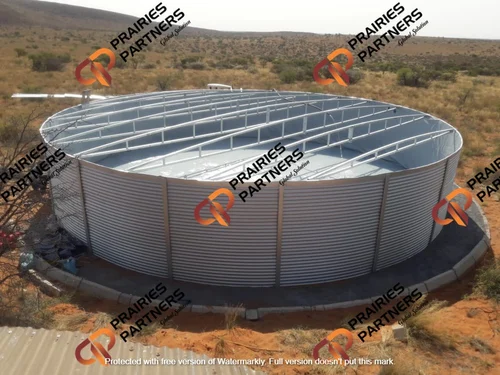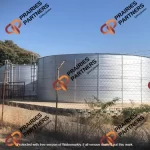Liquid Storage Tank Manufacturer
A liquid storage tank is a vital component in various industries, providing a secure and efficient solution for storing liquids such as water, chemicals, or petroleum products. Designed with durability and safety in mind, these tanks come in various sizes and materials to accommodate different requirements. Whether for industrial, commercial, or residential use, liquid storage tanks offer a reliable means of safely containing and accessing liquids when needed, contributing to smooth operations and ensuring a consistent supply of essential fluids.
Features:
Versatile: Liquid storage tanks accommodate a wide range of liquids, from water to chemicals, suiting diverse industrial and residential needs.
Durable: Constructed from robust materials like steel or fiberglass, these tanks withstand harsh conditions, ensuring long-lasting reliability and protection against leaks.
Customizable: Tailored to specific requirements, tanks offer flexibility in size, material, and accessories, meeting varied applications while incorporating features like pumps and monitoring systems for enhanced functionality.





SPECIFICATIONS:
Purpose: Liquid storage tanks are used to store various types of liquids, including water, chemicals, fuels, and industrial fluids, for industrial, commercial, agricultural, or residential purposes.
Types: There are different types of liquid storage tanks, including above-ground tanks, underground tanks, horizontal tanks, vertical tanks, and specialty tanks designed for specific liquids or applications.
Materials: Liquid storage tanks are constructed from various materials such as steel, fiberglass, polyethylene, concrete, and stainless steel, chosen based on factors like the type of liquid being stored, environmental conditions, and regulatory requirements.
Capacity: Liquid storage tanks come in a range of capacities, from small tanks suitable for residential use to large tanks capable of holding millions of gallons for industrial or municipal applications.
Safety: Safety features such as venting, overflow protection, leak detection systems, and secondary containment are essential to prevent spills, leaks, and environmental contamination.
Regulations: Liquid storage tanks are subject to regulations and codes that govern their design, installation, operation, and maintenance to ensure safety, environmental protection, and compliance with industry standards.
Maintenance: Regular inspection, maintenance, and testing of liquid storage tanks are crucial to ensure their integrity, prevent corrosion, degradation, or leaks, and prolong their lifespan.
Accessories: Tanks may be equipped with accessories such as pumps, valves, gauges, level indicators, and heating or cooling systems to facilitate filling, dispensing, monitoring, and temperature control of the stored liquids.
Environmental Impact: Proper management of liquid storage tanks is essential to minimize the environmental impact of spills, leaks, or releases, including implementing spill prevention measures, containment systems, and emergency response plans.
Cost and Lifespan: The cost of liquid storage tanks varies depending on factors such as size, material, and features, with considerations for installation, maintenance, and lifespan affecting overall cost-effectiveness.
